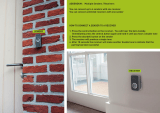
7. Use the button to select the day of the week when summer time starts, then press the OK
button.
8. Make sure that Set shift time is selected, then press the OK button.
9. Use the button to move the cursor under the desired position, use the Numeric buttons to
enter the time (in 24-hour format) when summer time starts, then press the OK button.
Precede single digits with a zero.
8.
Set the date and time when summer time ends.
1.
Use the button to select End date/time, then press the OK button.
2.
Make sure that Set month is selected, then press the OK button.
3.
Use the button to select the month when summer time ends, then press the OK button.
4.
Make sure that Set week is selected, then press the OK button.
5.
Use the button to select the week when summer time ends, then press the OK button.
6.
Make sure that Set day of week is selected, then press the OK button.
7.
Use the button to select the day of the week when summer time ends, then press the OK
button.
8.
Make sure that Set shift time is selected, then press the OK button.
9.
Use the button to move the cursor under the desired position, use the Numeric buttons to
enter the time (in 24-hour format) when summer time ends, then press the OK button.
Precede single digits with a zero.
9. Press the FAX button to return to the Fax standby screen.
Registering User Information
This section describes the procedure to register the user information.
Note
Before sending a fax, be sure to enter your name and fax/telephone number in Unit TEL no. registr.
and Unit name registr. on the FAX user settings screen (for US only).
1. Make sure that the machine is turned on.
Confirming that the Power Is On
2.
Press the Setup button.
The Setup menu screen is displayed.
3.
Use the button to select Fax settings, then press the OK button.
4.
Use the button to select FAX user settings, then press the OK button.
5.
Enter the unit fax/telephone number.
1.
Make sure that Unit TEL no. registr. is selected, then press the OK button.
2.
Use the Numeric buttons to enter the unit fax/telephone number.
3.
Press the OK button.
Note




















